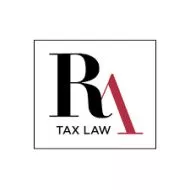Insights into the upcoming changes
Significant changes were announced to the Alternative Minimum Tax (AMT) system in the federal budget for 2023. The Alternative Minimum Tax (AMT) is a parallel tax calculation for individuals that allows for fewer deductions, exemptions, and tax credits than regular income tax rules.
ATM Framework
By limiting access to certain exemptions and deductions, the AMT regime modifies a taxpayer's regular taxable income. If the AMT is greater than the regular federal income tax, the individual must pay the AMT instead of the regular federal income tax. The difference between the AMT and regular federal income tax is considered a refundable tax that can be applied over the next seven years to reduce the amount of regular federal income tax that the taxpayer would otherwise be required to pay. Certain trusts are also subject to the AMT.
Upcoming changes
To address government concerns that too many high-income individuals pay little or no income tax each year due to certain tax incentives, the proposed changes are anticipated to take effect in 2024.
The suggested changes will result in a significant increase in AMT. However, fewer people will be liable to AMT due to a significant rise in the AMT exemption amount included in the amendments.
There are three main proposed changes to AMT, including broadening the AMT base, raising the AMT exemption amount, and increasing the AMT rate,
Broadening the AMT base
There are a few ways in way the Government is attempting to broaden the AMT base with their changes. They include:
- Increasing the capital gains inclusion rate from 80% to 100% for AMT purposes, while decreasing the inclusion rate for capital loss carry forwards and allowable business investment losses from 80% to 50%;
- Including 100% of the benefit associated with employee stock options, which under regular rules are taxed at 50%;
- Adding 30% of capital gains on donations of publicly listed securities, which under regular rules would not be subject to any tax;
- Disallowing 50% of various deductions, such as non-capital loss carryovers, moving expenses, and childcare expenses; and
- Allowing only 50% of non-refundable tax credits to reduce the AMT with certain exceptions.
Raising the AMT exemption
The current AMT basic exemption is $40,000 available to all individuals. The budget proposes to increase this exemption to the start of the fourth federal tax bracket, which is $165,430 for 2023.
Increasing the AMT rate
The proposed changes include an increase in the AMT rate from 15% to 20.5%.
Conclusion
Those who will be affected by the changes should review the relevant changes in detail, and make the appropriate plans to deal with the AMT. It will be crucial to plan ahead to reduce the impact of AMT for retirees who anticipate having a low future taxable income.
Originally published 29 September 2023
The content of this article is intended to provide a general guide to the subject matter. Specialist advice should be sought about your specific circumstances.


